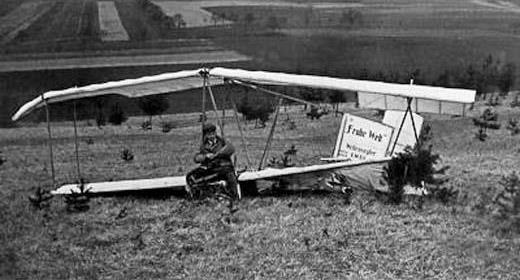Biplane glider designed by Fritz Stamer in 1922. It was used during the 1922 and 1923 seasons as the glider school Wasserkuppe (by Weltensegler Flugschule?).
Early biplane designed by Fritz STAMER and built by the firm Segelflugzeugwerke Baden-Baden. It was used during the 1922 and 1923 seasons as the glider school Wasserkuppe (by Weltensegler Flugschule?).
During the spring of 1922 three students Segelflugvereinigung Techniche Hochschule in Vienna (Austria), Franz Efler, Karl Ludwig and NOVOTNY Wondrak (under the direction of their teacher Richard Knoller), undertook the construction of two light gliders Frohe Welt, according to a design by Fritz STAMER. Both devices were named S1 and S2. The first flight of S1 was held April 7, 1922 in Bruck ad Leitha. The second device (S2) entered the contest Rhön 1923 of August 17 to 31 (with registration number 60) and the first flight contests at Waschberg bei Stockerau (northwest of Vienna ) of 13 to 21 October 1923.
RemarksThis machine is called Weltensegler Roland Festung in the book of Gymnich
| Type |
Single seat biplane glider |
| Dimensions |
Length 5,40 m, height , span 8,00 m, wing area 20 m2 |
| Weights |
Empty 62 kg, max. 130 kg, wing loading 6,5 kg/m2
|
| Performance |
Max.. speed , |
| Type |
Werk.Nr |
Registration |
History |
| S1 |
|
|
The first flight of S1 on April 7, 1922 in Bruck ad Leitha. |
| S2 |
|
|
The second unit (S2) participated in the contest of the Rhön 1923 from 17 to 31 August (with registration number 60) and the first competition flight without Austrian engine, Waschberg bei Stockerau (northwest of Vienna ) from 13 to 21 October 1923. |
